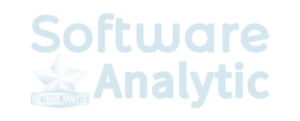Identity and Access Management is essential to an organization’s cybersecurity strategy. IAM solutions provide centralized identity management and access control to reduce the risk of unauthorized access and data breaches. This article discusses the importance of Identity and Access Management, its application, benefits, limitations, and market value.
What is Identity and Access Management?
Identity and Access Management (IAM) directs the policies, processes, and technologies used to manage digital identities and control administrative access to resources. In simpler terms, IAM involves managing user identities and their access to various systems, applications, and data.
IAM typically includes various activities, such as user authentication, authorization, provisioning, and de-provisioning. It also involves managing user roles and permissions, enforcing security policies, and monitoring user activity to ensure compliance with regulatory requirements. IAM is critical for organizations to ensure that only authorized users can access sensitive data, systems, and applications while protecting against cyber threats, data breaches, and other security risks. Effective IAM can help organizations minimize the risk of data breaches, reduce the cost of managing access, and streamline the user experience.
Why is Identity and Access Management important?
Some important of Identity and Access Management are given below.
Security
IAM is essential for maintaining the security of an organization’s digital assets, including sensitive data, systems, and applications. IAM provides a centralized system for managing user identities and access rights, ensuring only authorized users can access critical resources. IAM can protect against data breaches, cyber threats, and other security risks by implementing strong security controls.
Compliance
Numerous industries are subject to regulatory subordination requirements like HIPAA, PCI-DSS, and GDPR. IAM can help organizations meet these compliance requirements by providing tools for managing access to sensitive data, enforcing security policies, and monitoring user activity. It can help organizations avoid costly fines and reputational damage associated with non-compliance.
Efficiency
IAM can streamline access management processes, reducing the burden on IT staff and improving the user experience. By automating access requests, approvals, and provisioning, IAM can help organizations to reduce the time and cost associated with managing access. It can free up IT resources to focus on other critical tasks and improve organizational efficiency.
Risk Management
IAM is essential for managing risk by identifying and mitigating security threats. By monitoring user activity and enforcing security policies, IAM can identify potential security incidents and prevent unauthorized access to critical resources. It can help organizations minimize the risk of security breaches and protect against data loss.
Application of Identity and Access Management
Some applications of Identity and Access Management are given below.
User Authentication
One of the primary applications of IAM is user authentication. IAM systems typically require users to deliver login certifications, such as a username and password, to verify their identity before granting access to resources. Some IAM systems may use multi-factor authentication, biometric authentication, or other advanced authentication methods to enhance security.
Access Control
IAM is also used for controlling access to resources within an organization. IAM systems can enforce security policies defining who can access specific resources and what actions they can perform. It can help prevent unauthorized access and ensure that users can only access the resources needed to perform their job functions.
Identity Provisioning
IAM systems can also be used for identity provisioning, which involves creating and managing user accounts and access rights. It can include creating new user accounts, modifying access rights for existing users, and revoking access rights for users who no longer need them. Identity provisioning can be done manually or through automation, trusting the size and sophistication of the organization.
Identity Governance
IAM systems can also be used for identity governance, which involves establishing policies and processes for managing user identities and access rights. It can include defining user roles and responsibilities, setting up approval workflows for access requests, and establishing audit and compliance requirements.
Benefits of Identity and Access Management
Some benefits of Identity and Access Management are given below:
Improved User Experience
IAM can also improve the user experience by providing seamless access to resources across different applications and systems. For example, single sign-on (SSO) capabilities can reduce the number of login prompts and passwords users need to remember, improving convenience and productivity.
Increased Flexibility
IAM can help organizations to accommodate changing business requirements and evolving security threats. By providing a flexible and scalable platform for managing user identities and access rights, IAM can help organizations to adapt to changing business needs, such as mergers, acquisitions, and reorganizations.
Reduced Costs
IAM can decrease access management costs by automating many access management processes. By reducing the burden on IT staff, IAM can help organizations to save time and money on access management activities, such as user account creation, modification, and deletion.
Improved Auditing and Reporting
IAM can help organizations to improve auditing and reporting capabilities by providing a centralized system for monitoring user activity and enforcing security policies. IAM can help organizations identify potential security incidents and comply with regulatory reporting requirements by providing detailed logs and user activity reports.
Limitations of Identity and Access Management
Some limitations of Identity and Access management are given below.
False sense of security
IAM can provide a false sense of security, leading organizations to believe they are fully protected against security threats. However, IAM is just part of a comprehensive security strategy. It should be supplemented with security measures like firewalls, intrusion detection techniques, and protection information and event management (SIEM) solutions.
Insider threats
IAM solutions may not effectively mitigate insider threats, such as employees who abuse their access privileges or share passwords. IAM solutions can only manage access based on predefined policies and may not be able to detect or prevent unauthorized access by privileged users.
Lack of interoperability:
IAM solutions may need to be more interoperable with other security technologies or IT systems, which can create integration issues and limit the effectiveness of the IAM solution. Organizations should carefully evaluate the interoperability of their IAM solution with other technologies before making a purchase decision.
Maintenance overhead
IAM solutions require ongoing maintenance and management, including user account creation, modification, and deletion, policy enforcement, and software updates. It can create significant maintenance overhead for IT staff and impact the IAM solution’s overall effectiveness and efficiency. Organizations should ensure that they have adequate resources and expertise to manage their IAM solution effectively.
How are growing global Identity and Access Management (IAM) markets?
Grand View Research said the global Identity and Access Management (IAM) market value was USD 18.09 billion in 2023. It is expected to reach USD 41.52 billion by 2030, with the market growing at a compound annual growth rate (CAGR) of 12.6 % from 2023 to 2030.
Key Companies
Some prominent global Identity and Access Management (IAM) market players include Amazon Web Services, Inc., Broadcom, One Identity LLC., ForgeRock, HID Global Corp., IBM, McAfee, LLC, Microsoft, Okta, OneLogin, Oracle, Ping Identity, SecureAuth, Evidian, and Intel Corp.
Conclusions
Identity and Access Management is essential to an organization’s cybersecurity strategy. IAM solutions can help organizations manage user access, enforce security policies, and protect against security threats. IAM solutions can help reduce the risk of unauthorized access and data breaches by providing centralized identity and access management. However, IAM solutions have limitations, including complexity, cost, and the potential for a false sense of security. Organizations should carefully evaluate the benefits and limitations of IAM solutions before making a purchase decision and ensure they have adequate resources and expertise to manage their IAM solution effectively.




















